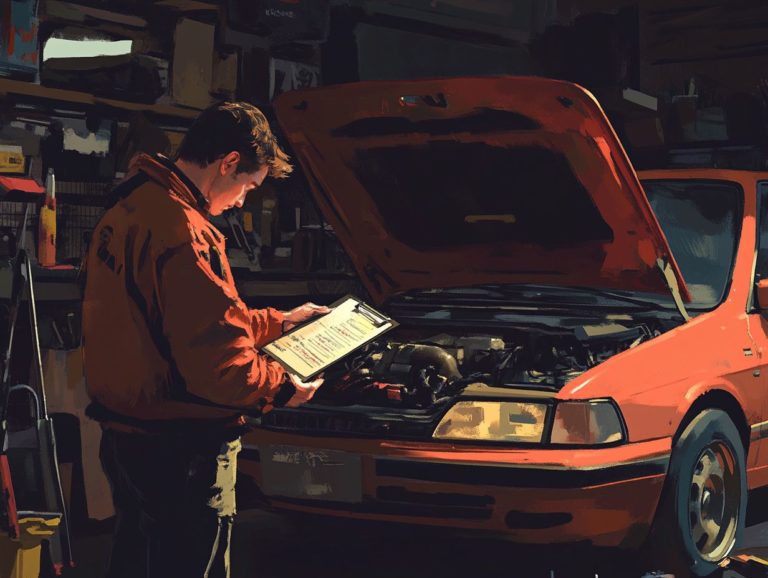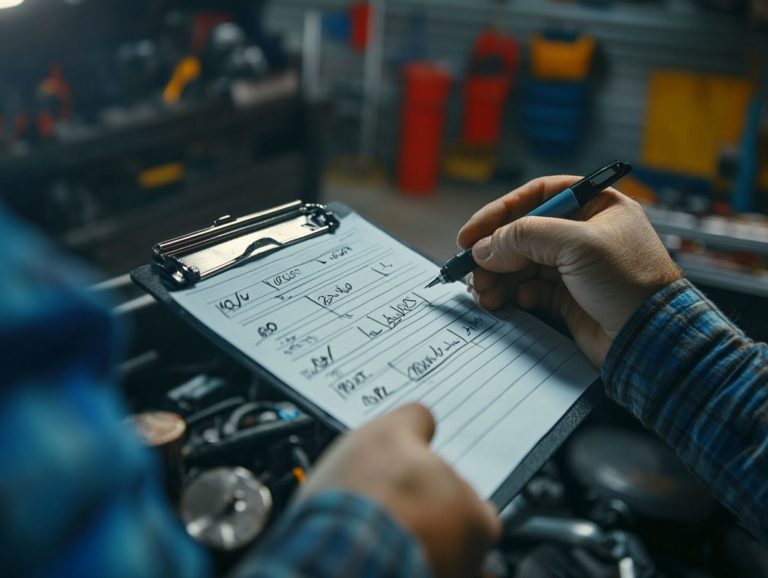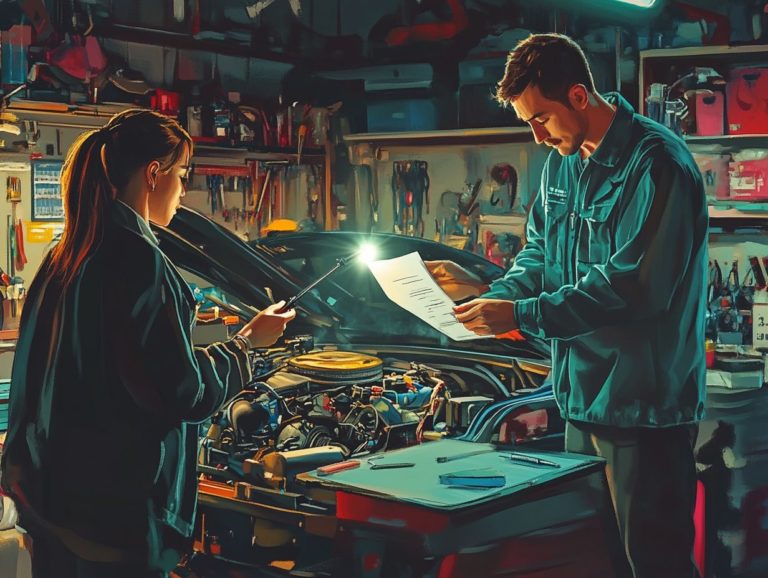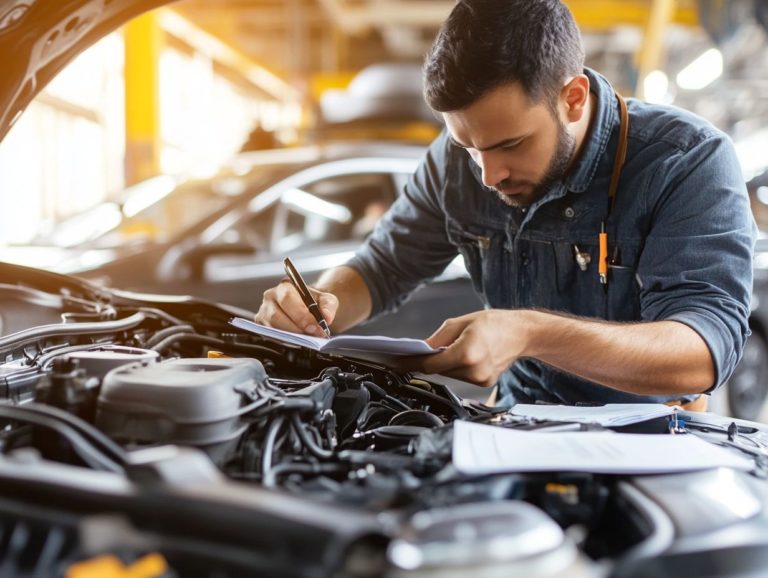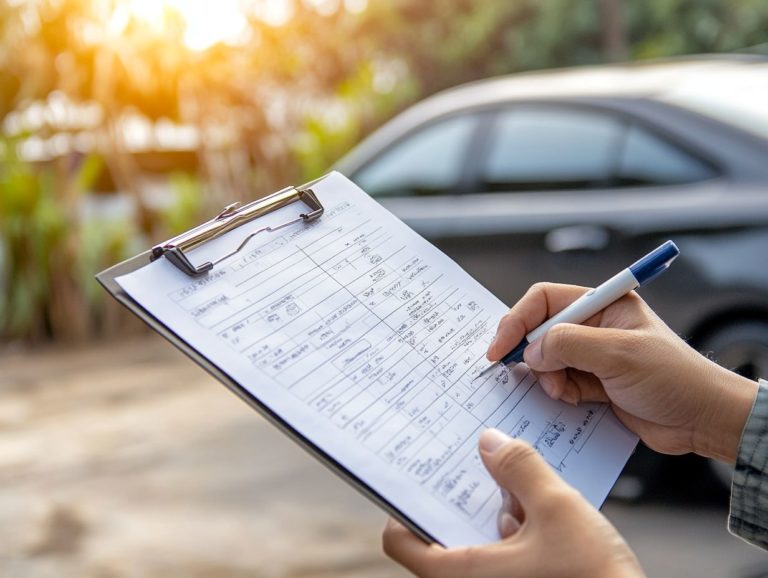The Complete Guide to a Home Car Inspection
When it comes to vehicle maintenance, you might find that many car owners overlook the vital importance of regular home inspections.
Conducting a thorough inspection allows you to identify potential issues before they escalate into costly repairs, ensuring your vehicle remains safe and reliable. From checking for structural damage to assessing engine health, each step is crucial in maintaining car performance.
This guide will walk you through the essential aspects of home car inspections, complete with checklists and tips to keep your vehicle in pristine condition.
Are you ready to take charge of your car s health? Let s dive in!
Contents
Key Takeaways:
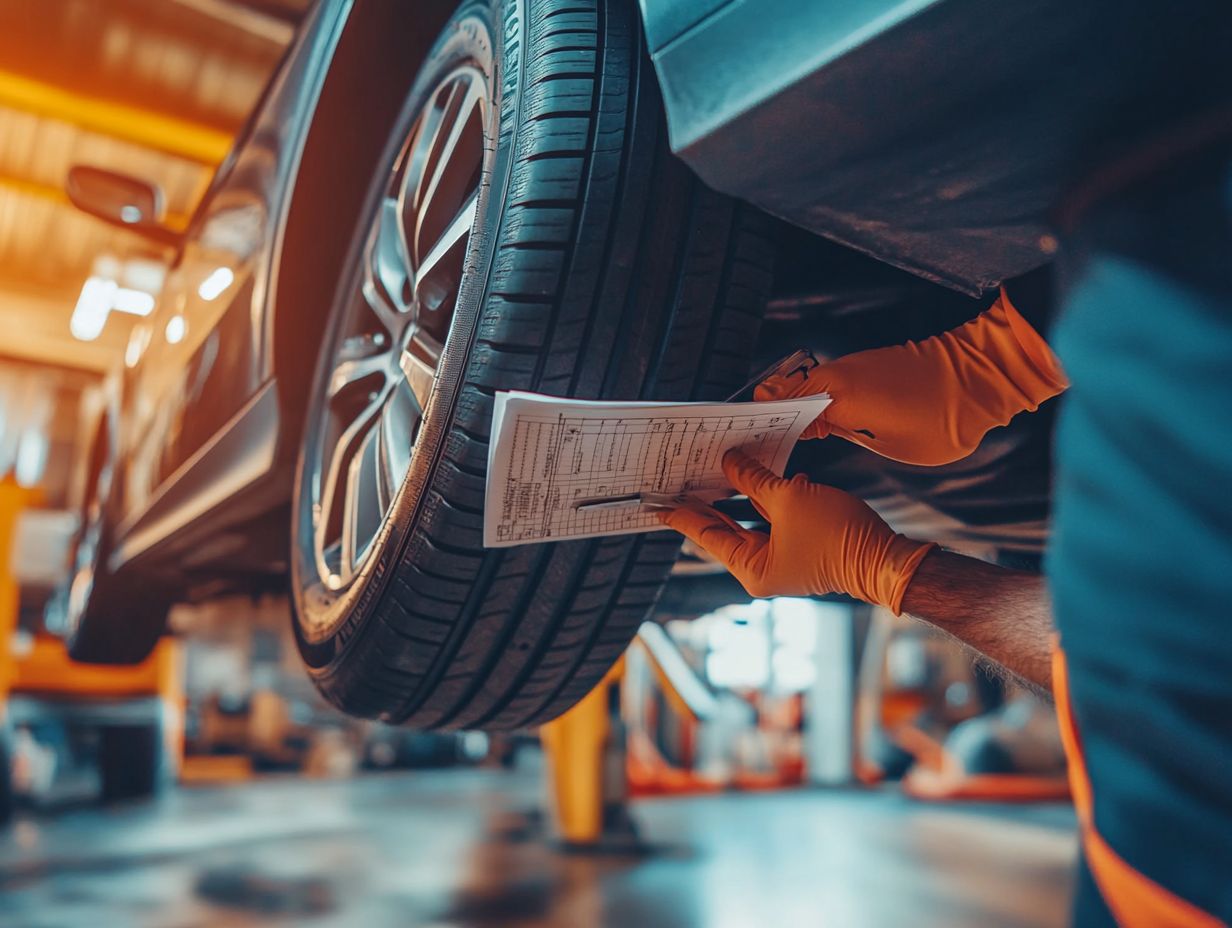
Regular home car inspections can save you money and ensure your safety on the road. Before starting the inspection, check for any potential concerns. During the inspection, pay careful attention to the exterior, interior, and under the hood for any structural, mechanical, or fluid-related issues.
Why Home Car Inspections are Important
Home car inspections are essential for ensuring the safety, performance, and longevity of your vehicle. They provide a valuable opportunity to identify mechanical failures before they become costly repairs.
By prioritizing regular inspections, you enhance your vehicle’s reliability while safeguarding the well-being of yourself and your passengers. This practice aligns with manufacturer safety checks, ensuring your vehicle remains in peak condition.
Benefits of Regular Inspections
Regular inspections offer many benefits. You ll enhance safety, save costs through preventive maintenance, and improve overall vehicle reliability.
By committing to routine checks, you ensure that critical components like brakes, tires, and lights function at their best, significantly reducing the risk of accidents.
These inspections often reveal minor issues that, when addressed early, prevent them from escalating into major repairs. Ultimately, this translates to substantial savings over time.
Beyond financial gains, consistently monitoring your vehicle s condition instills trust in its performance. You ll navigate every journey with confidence.
Emphasizing the importance of regular evaluations extends your vehicle s lifespan and contributes to a safer driving environment for everyone on the road.
Pre-Inspection Checklist
A thorough pre-inspection checklist is your first step to keeping your vehicle safe. It ensures every critical component is carefully checked.
This approach supports compliance with safety and quality standards and enhances the overall integrity of your vehicle assessments.
What to Look for Before Starting the Inspection
Before you begin the vehicle inspection, know what to focus on, including the condition of key components like brakes, tires, and fluids. This maintenance inspection benefits both you as the driver and the mechanics involved.
Start by examining the fluid levels engine oil, coolant, brake fluid, and transmission fluid. Each of these plays a pivotal role in your vehicle s performance and longevity.
Next, assess the tires by checking the depth of the grooves on your tires and inflation pressure; these factors directly impact handling and safety. Don t overlook the brakes; ensure they operate smoothly by testing the pedal response and listening for any unusual noises.
Your careful attention to detail upholds your vehicle’s reliability and guarantees your safety on the road.
Exterior Inspection
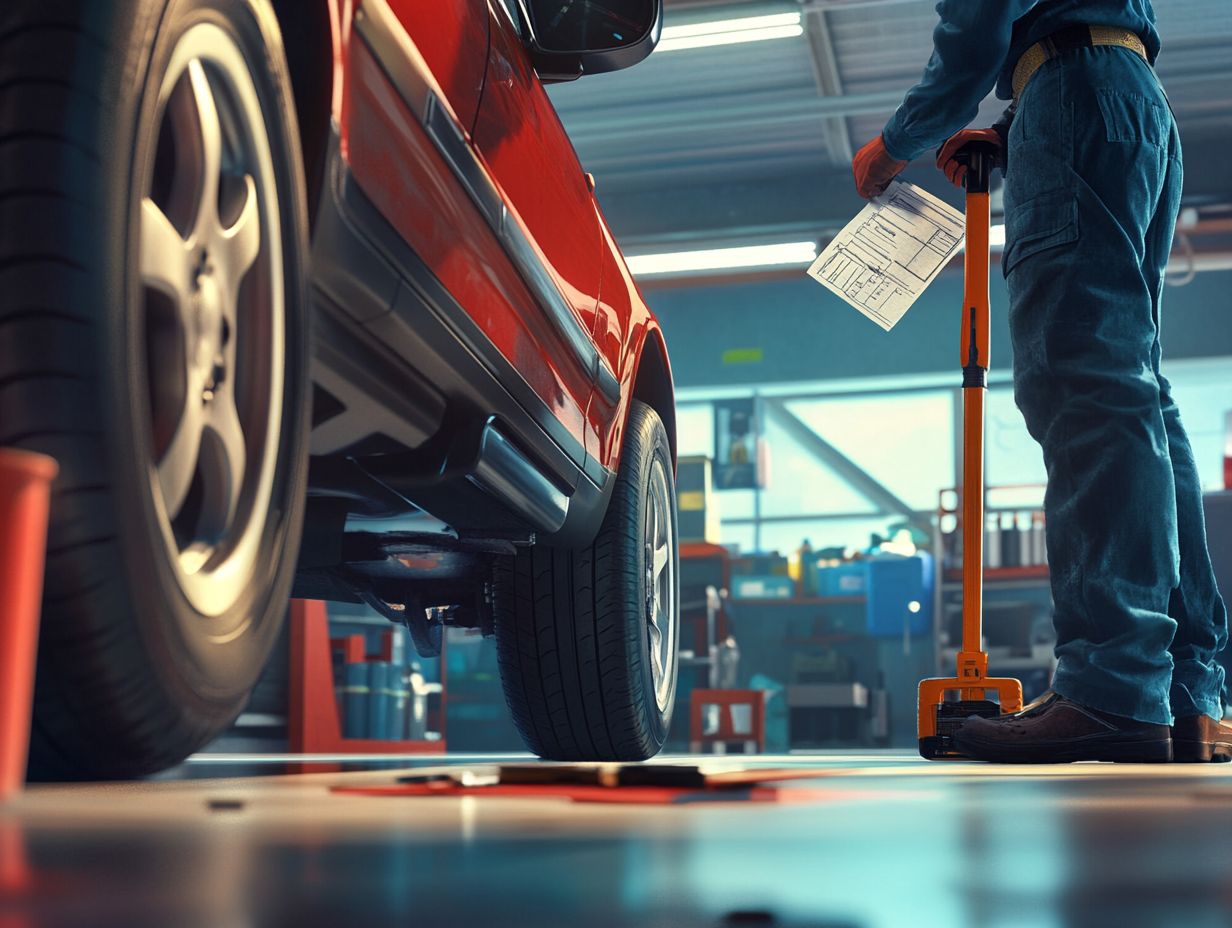
The exterior inspection of a vehicle is an essential part of the overall inspection process. It uncovers any structural issues or damage that might jeopardize the vehicle’s safety and performance.
Take the first step towards a safer ride today!
Checking for Structural Issues and Damage
During your exterior inspection, it’s essential to look for structural issues and damage. These factors can significantly affect your vehicle’s performance and safety on the road.
Identifying these problems is crucial. Common types of damage, like rust, can weaken metal parts, while dents can disrupt how the vehicle moves through the air and its overall look.
Frame integrity is a major concern. Any distortion here can cause misalignment, leading to uneven tire wear and poor handling. Fixing these issues quickly helps your vehicle perform well and keeps you safe.
Ignoring warning signs can lead to serious problems that jeopardize your vehicle’s reliability and the safety of its occupants.
Interior Inspection
The interior inspection is equally important. It s vital to assess the condition of key components like seat belts, emergency gear, and overall cleanliness.
Paying close attention to these areas ensures you meet safety standards, protecting both you and your passengers.
Assessing the Condition of Key Components
Checking the condition of key interior components is crucial for your vehicle’s safety and reliability. Ensure all systems function properly and meet inspection documentation requirements.
Focus on seat belts they should be free from frays and work correctly to secure passengers during a collision. Don’t forget about airbags; they are essential for reducing injury risk in accidents.
Monitor dashboard indicators as they give real-time updates on your vehicle’s health. They alert you to any potential issues that could affect safety. By regularly evaluating these components, you can quickly address any problems and improve road safety for everyone.
Under the Hood Inspection
The under-the-hood inspection provides vital insights into your vehicle’s engine health and fluid levels. This step is critical for ensuring optimal performance and preventing mechanical failures in the future.
Examining Engine and Fluid Levels
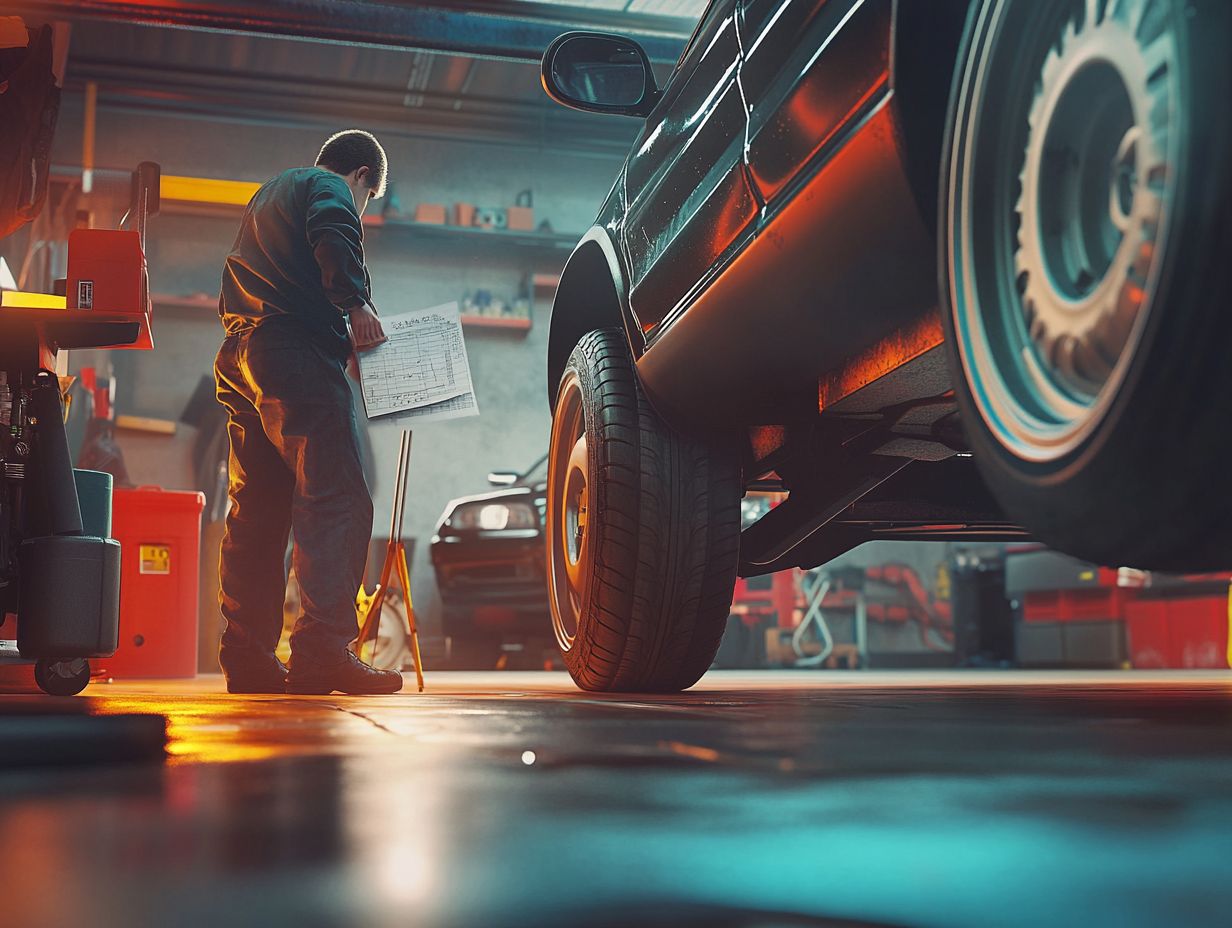
Checking the engine and fluid levels is a basic but essential part of your under-the-hood inspection. It directly impacts your vehicle’s efficiency and maintenance.
Regularly check essential fluids like oil, coolant, and brake fluid. These fluids help maintain engine temperature, lubrication, and ensure the braking system works reliably.
Keeping an eye on these levels can help you avoid costly repairs or unexpected breakdowns. Properly managing your fluid levels greatly enhances your vehicle’s longevity, ensuring all systems work well together.
Staying on top of this gives you peace of mind and confidence on the road, whether you are commuting daily or going on longer trips.
Test Drive and Final Assessment
The test drive and final assessment are key moments in the vehicle inspection process. These steps allow you to evaluate the vehicle s performance and overall condition, ensuring everything meets the highest safety standards.
Get ready to hit the road safely!
Evaluating Performance and Overall Condition
Evaluating your vehicle’s performance and overall condition during the test drive is crucial for identifying potential issues that could impact safety and reliability.
As you take this important assessment, focus on key performance indicators like acceleration. This metric provides valuable insights into how responsive the engine is and how well it delivers power. Notice how the vehicle accelerates; this can tell you a lot about its overall health.
Next, observe the braking performance. This will help you determine if the braking system is in excellent condition, ensuring effective stopping distances in various conditions.
Steering responsiveness is another critical aspect to consider. Pay attention to how the vehicle reacts to turns and adjustments; this can reveal underlying issues with the suspension or alignment.
Documenting these evaluations not only helps you create a comprehensive inspection record but also plays a vital role in promoting vehicle safety for all future drivers. Taking these steps ensures you make an informed decision, setting the stage for a safe and enjoyable driving experience.
For further insights, check out the video below:
Frequently Asked Questions
What is a home car inspection?
A home car inspection is a thorough examination of a vehicle performed by a professional inspector before purchasing or selling a car. It guarantees your car is in great shape!
Why is a home car inspection important?
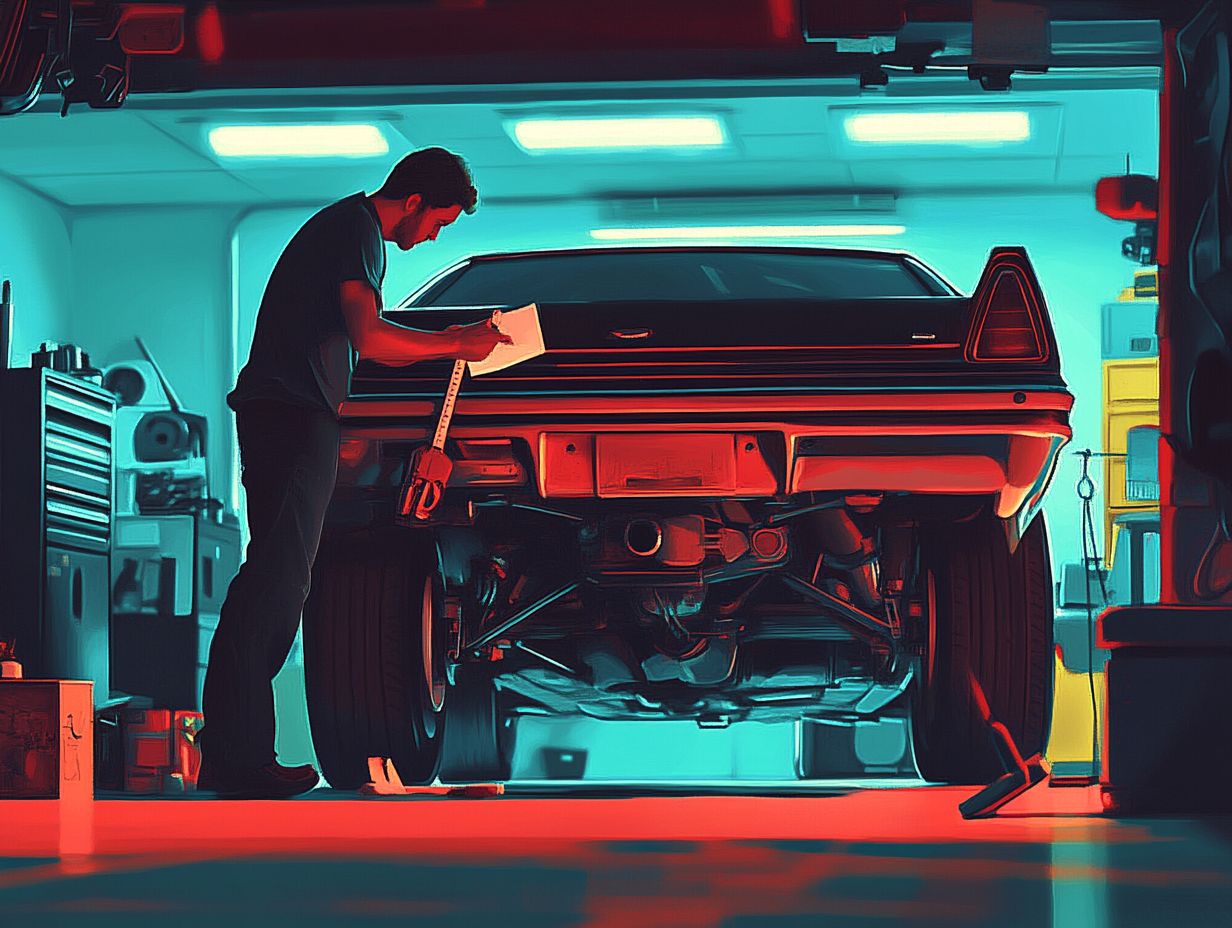
A home car inspection is important because it provides buyers and sellers with detailed information about the car’s condition. It can also help uncover hidden problems or potential safety hazards, ultimately saving you money and ensuring a safe vehicle.
What does a home car inspection include?
- Exterior examination, including body and paint.
- Interior assessment for wear and tear.
- Inspection of parts of the car, such as tires and wheels.
- Evaluation of the engine and transmission.
- Review of all other systems and features of the car.
Who should perform a home car inspection?
A home car inspection should be performed by a certified and experienced professional inspector. They have the knowledge and expertise to evaluate a car thoroughly and provide an accurate and unbiased report on its condition.
How long does a home car inspection take?
The duration of a home car inspection can vary depending on the size and condition of the vehicle. On average, it can take anywhere from 1 to 3 hours. However, it’s essential to allow enough time for a thorough inspection to ensure all aspects of the car are properly evaluated.
Is a home car inspection worth the cost?
Yes, a home car inspection is definitely worth the cost. It can potentially save you from purchasing a car with hidden problems that could end up costing you thousands of dollars in repairs. It also provides peace of mind and ensures you are making a sound investment in a safe and reliable vehicle.
Don t wait until it s too late to know your car s condition! Schedule your inspection today!

